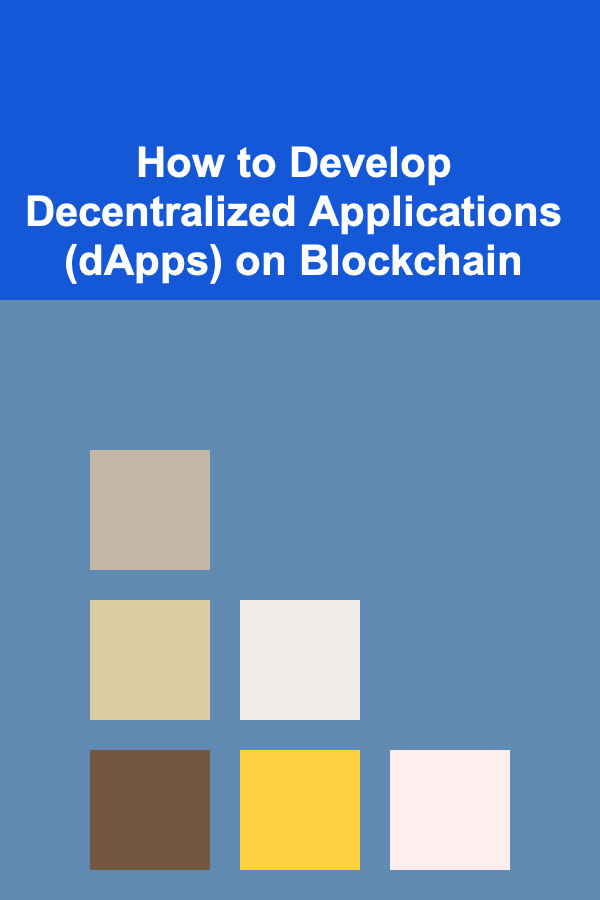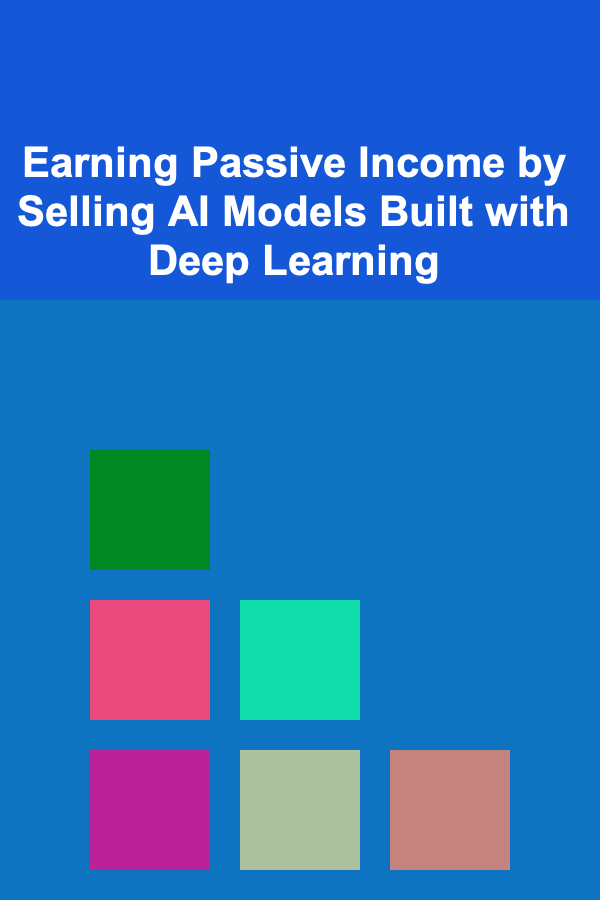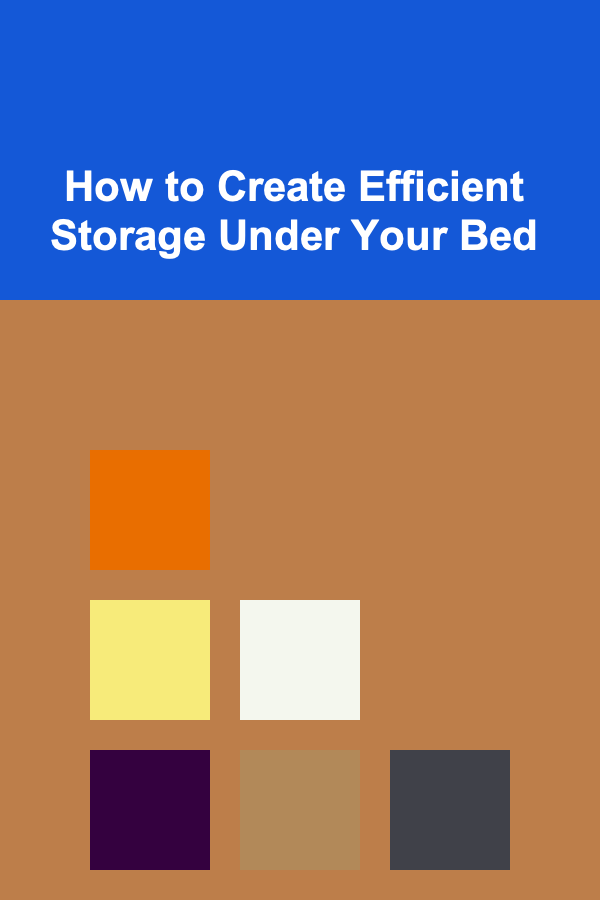
How to Develop Decentralized Applications (dApps) on Blockchain
ebook include PDF & Audio bundle (Micro Guide)
$12.99$6.99
Limited Time Offer! Order within the next:

Decentralized applications, commonly known as dApps, have become one of the most revolutionary aspects of blockchain technology. By leveraging the security, transparency, and immutability of blockchain networks, dApps are poised to disrupt traditional centralized models in areas ranging from finance to gaming, social media, and beyond.
This article will explore the development of decentralized applications on blockchain, focusing on the fundamentals, the tools and technologies needed, as well as practical steps to build a dApp.
What Are Decentralized Applications (dApps)?
A decentralized application (dApp) is an application that runs on a blockchain or a decentralized network of computers. Unlike traditional applications that run on centralized servers, dApps rely on peer-to-peer networks, where data and computing power are distributed across nodes in the network.
The key features that define dApps are:
- Decentralized: The application is not controlled by any central authority, making it more resistant to censorship and downtime.
- Open Source: Most dApps are open source, meaning that anyone can inspect, modify, or improve the code.
- Blockchain-Based: dApps use blockchain for transaction verification, ensuring transparency and immutability of data.
- Incentivization: dApps often involve some form of token economics, where users or participants can earn tokens for contributing to the network or ecosystem.
Common use cases for dApps include decentralized finance (DeFi), gaming, identity management, supply chain tracking, and more.
Core Technologies Behind dApps
Before diving into the practical steps of building a dApp, it's important to understand the core technologies that make dApps possible.
Blockchain
At the heart of every dApp is blockchain technology. Blockchain is a distributed ledger that stores data in a secure, immutable, and transparent manner. Blockchain allows multiple parties to verify the state of the system without relying on a central authority.
There are several types of blockchains that you can choose from when developing dApps, including:
- Public Blockchains: Open and permissionless blockchains like Ethereum, Solana, and Binance Smart Chain allow anyone to participate in the network and build decentralized applications.
- Private Blockchains: These blockchains are permissioned and controlled by a single organization or consortium. They are used for more enterprise-focused applications.
- Consortium Blockchains: These are hybrid models where multiple organizations control the blockchain network.
For most dApp development, public blockchains like Ethereum are the most popular choice due to their widespread adoption and the mature developer tools available.
Smart Contracts
Smart contracts are self-executing contracts with the terms of the agreement directly written into code. They allow dApps to execute predefined actions automatically when certain conditions are met. Smart contracts are deployed on the blockchain, ensuring that they are immutable and tamper-proof.
Smart contracts are the backbone of most decentralized applications, particularly in areas like DeFi, where they can automate financial transactions, insurance claims, and voting mechanisms.
The most widely used smart contract platform is Ethereum, which supports the Solidity programming language for writing smart contracts.
Tokens
Tokens are digital assets that are used in decentralized ecosystems. In many dApps, tokens play a crucial role in incentivizing users, facilitating transactions, and governing the application. Tokens can be classified as:
- Utility Tokens: These tokens are used to access services or products within the dApp.
- Governance Tokens: These tokens allow holders to vote on decisions regarding the future of the dApp, such as protocol upgrades or changes to the tokenomics.
- Security Tokens: These represent ownership of an asset, such as shares in a company, and are subject to regulations.
Tokens are often implemented through ERC-20 (fungible tokens) or ERC-721 (non-fungible tokens or NFTs) standards on Ethereum.
Decentralized Storage
dApps require decentralized storage solutions to store data in a way that is consistent with their decentralized nature. Traditional applications often rely on centralized databases, but dApps use decentralized file storage systems to ensure that data is distributed across multiple nodes.
Some popular decentralized storage solutions include:
- IPFS (InterPlanetary File System): A peer-to-peer file system that allows files to be stored and shared in a decentralized manner.
- Arweave: A permanent storage solution designed to store data forever in a decentralized manner.
- Filecoin: A decentralized storage network that allows users to rent out storage space on their devices.
Key Steps to Develop a dApp
Now that you have a foundational understanding of the technologies behind dApps, let's walk through the steps required to develop your own decentralized application.
Step 1: Identify the Problem and Conceptualize the dApp
The first step in developing a dApp is to identify the problem you want to solve. Just like any other software development project, the purpose of your dApp should be clear and meaningful. Some questions to consider at this stage include:
- What problem does your dApp aim to solve?
- How will blockchain technology improve the solution?
- Will the dApp require its own native token, or will it use an existing one?
- Who are the potential users, and how will they interact with the dApp?
This phase is crucial, as it sets the foundation for the features, design, and user experience (UX) of the dApp.
Step 2: Choose the Blockchain Platform
The next step is to select the blockchain platform on which you will build your dApp. Ethereum is the most popular choice due to its extensive developer resources, large community, and mature ecosystem of tools and libraries. However, other blockchain platforms such as Binance Smart Chain , Solana , and Polkadot are also gaining traction and may be better suited for certain use cases.
Factors to consider when choosing a blockchain platform include:
- Transaction speed: How quickly can transactions be confirmed on the network?
- Transaction costs: What are the fees associated with using the network?
- Developer tools: Does the platform provide robust developer tools, documentation, and support?
- Security: Is the platform secure enough for your application?
Step 3: Develop the Smart Contract
Once you have selected the blockchain platform, the next step is to develop the smart contract. A smart contract is a set of rules that defines the logic of your dApp and automates the execution of tasks. The smart contract is deployed to the blockchain, and it cannot be altered once deployed, which ensures transparency and trust.
To write smart contracts on the Ethereum blockchain, you will primarily use the Solidity programming language. Solidity is a contract-oriented language designed for writing smart contracts that run on the Ethereum Virtual Machine (EVM).
During the development of the smart contract, you'll need to focus on:
- Contract logic: Define the functionality of your dApp. For example, if you're building a decentralized exchange, you would define the rules for trading, liquidity provision, and token swaps.
- Security: Smart contracts must be carefully audited to ensure that they are free of vulnerabilities, as bugs can lead to security breaches or loss of funds.
- Testing : Use frameworks like Truffle or Hardhat to test and deploy your smart contract in a test environment before going live.
Step 4: Develop the Frontend
While the backend of your dApp (the smart contract) runs on the blockchain, the frontend (user interface) of the dApp will be similar to that of traditional web applications. You'll need to build a web or mobile frontend that allows users to interact with the blockchain.
The frontend of a dApp typically includes:
- User interface (UI): The design and layout that users will interact with.
- Web3 integration : A Web3 library (such as web3.js or ethers.js) is used to interact with the blockchain. These libraries allow your frontend to communicate with the smart contract deployed on the blockchain, send transactions, and retrieve data.
- Wallet integration : To interact with the blockchain, users need a cryptocurrency wallet. The most common wallet used for dApp development is MetaMask, a browser extension that enables users to manage their Ethereum wallets and interact with decentralized applications.
Step 5: Deploy and Test the dApp
Once the frontend and backend are developed, the next step is to deploy the smart contract to the blockchain and integrate it with the frontend. At this stage, you'll want to test the dApp on a test network (such as Rinkeby or Ropsten for Ethereum) before deploying it on the mainnet.
When testing the dApp, ensure that:
- All interactions with the smart contract work as expected.
- The frontend communicates correctly with the blockchain and wallet.
- Security issues are addressed and fixed.
- The application performs well under different conditions.
Step 6: Launch and Maintain the dApp
After thorough testing, your dApp is ready for launch. However, the work doesn't stop there. Maintaining and improving your dApp is crucial to its success. Continuous monitoring and regular updates are necessary to fix bugs, add features, and ensure that the dApp remains secure.
Key considerations after launch include:
- User feedback: Collect feedback from users and address any issues they encounter.
- Scalability: As your dApp gains more users, you may need to consider how to scale the application to handle increased traffic.
- Upgrades: Blockchain and smart contracts are immutable, but you can deploy new versions of your smart contract to introduce new features or fix issues.
Conclusion
Developing decentralized applications (dApps) is an exciting and challenging endeavor that requires a solid understanding of blockchain, smart contracts, tokens, and decentralized storage. By leveraging blockchain technology, dApps offer a decentralized, transparent, and secure alternative to traditional applications.
While the development process can be complex, the tools and resources available today make it easier than ever to build and deploy dApps. As blockchain technology continues to evolve, we can expect even more innovations in the world of decentralized applications, paving the way for a more decentralized and user-centric internet.
Reading More From Our Other Websites
- [Personal Care Tips 101] How to Build a Skincare Routine for Beginners
- [Personal Care Tips 101] How to Find Time for Hobbies You Love
- [Ziplining Tip 101] How to Assess the Structural Integrity of Zipline Equipment on DIY Projects
- [Organization Tip 101] How to Reduce Shop Dust and Improve Safety with the Right Collection System
- [Biking 101] How to Prepare for Your First Cycling Event: A Beginner's Guide
- [Home Party Planning 101] How to Plan a Cozy Movie Night Party at Home
- [Organization Tip 101] How to Use Charts and Graphs for Data Organization
- [Simple Life Tip 101] Best Decluttering Methods for a Simple Life
- [Organization Tip 101] How to Use Drawer Dividers for Effective Organization
- [Organization Tip 101] How to Use Labels to Maintain Organization Throughout the Home

Earning Passive Income by Selling AI Models Built with Deep Learning
Read More
How to Create Efficient Storage Under Your Bed
Read More
How to Improve Acoustic Privacy in Shared Living Spaces
Read More
What Inspirational Quotes Can Motivate You to Stay Organized?
Read More
Understanding Zero-Knowledge Proofs in Practice
Read More
How to Negotiate a Higher Salary
Read MoreOther Products

Earning Passive Income by Selling AI Models Built with Deep Learning
Read More
How to Create Efficient Storage Under Your Bed
Read More
How to Improve Acoustic Privacy in Shared Living Spaces
Read More
What Inspirational Quotes Can Motivate You to Stay Organized?
Read More
Understanding Zero-Knowledge Proofs in Practice
Read More